The .380 ACP semi-automatic pistol is one of the most popular categories of concealed carry weapons in the United States and has been for years. We will dive deep into the one of the best 380 pistols on the market, the Ruger LCP 2.
Why are 380 Pistols so Popular?
It’s easy to see why 380s are so popular when it comes to concealed carry. .380 pistols are typically small enough to carry in the pocket, they are unquestionably smaller and lighter than competing 9mm single stack autos or .38 snub nose revolvers.
But despite those advantages, .380 pocket pistols have also been plagued by a number of downsides when it comes to concealed carry. The Ruger LCP II, released by Ruger at the end of 2016, sought to remedy many of those downsides.
In this review, we will cover the disadvantages of the .380 pistol that the LCP 2 sought to remedy, what makes the LCP II an improvement over the original LCP, and the uses for and specifications of the LCP II.
Table Of Contents
What Are The Disadvantages of the .380 Pocket Pistol?
.380 pocket pistols are incredibly easy to conceal, and this is what is largely attributed to their long time popularity in the United States. But they do come with some disadvantages.
Examples of popular small pocket .380 autos include the original Ruger LCP, Taurus TCP, Smith & Wesson Bodyguard .380, and the Kel-Tec P3-AT to name a few. Every one of these pistols are incredibly easy to conceal in your pocket.
Unfortunately, each of these pistols and others in their class suffer from a number of serious flaws.
These flaws include, but are not limited to:
.380 Pistols Have Terrible Trigger Pulls
.380 pocket pistols have a well-deserved reputation for having some of the worst trigger pulls of any semi-automatic pistols on the market.
The trigger pull on most .380 autos is exceptionally long and gritty. In other words, it’s not pleasant to shot at all.
While larger .380 pistols such as the Walther PPK/S, Walther PK380, Bersa Thunder 380, and Glock 42 don’t have this problem, the truly small pocket pistols such as the LCP and TCP most certainly do.
They’re Difficult To Shoot
.380 pocket pistols are traditionally difficult to fire for a number of reasons: in addition to the horrid trigger pulls like we just discussed, they also suffer from being extremely snappy due to their small size.
Granted, .380 pocket autos are not guns that you take to the range for fun. They are meant to be defensive arms that can be easily carried in the pocket. Nonetheless, the fact that they are difficult to shoot can be a major problem for training and self-defense purposes.
.380 Pistols Have Poor Ergonomics
Last but not least, and while this is entirely personal preference, many regard .380 autos as having poor ergonomics due to the fact that their extraordinarily small size means you can’t get a full grip on them. This only naturally makes it more difficult to fire properly like we just talked about.
Ruger sought out to remedy much of these problems with the LCP II. Did they succeed? Let’s find out by comparing it to the original LCP.
Battle of the Ruger .380s: LCP vs. LCP II
The original Ruger LCP has been perhaps the most well-known and popular .380 pocket pistol since it was first introduced in 2008. Nonetheless, it still suffers from many of the issues that we just talked about in the previous section: the trigger pull is awful, they are difficult to shoot, it can be difficult to get a good grip on the pistol for some shooters, and the slide won’t even lock back on the last round fired.
Ruger listened to the criticism, which resulted in the birth of the LCP II. While the LCP II is still a small pocket pistol, Ruger made a number of improvements to it.
Ruger LCP 2 Improved Trigger Pull
The biggest improvement, by far, is the trigger pull. The trigger pull on the LCP II most closely resembles the trigger on larger striker fired polymer pistols such as the Glock. It is considerably lighter and smoother than the original LCP and other comparable .380 pistols, and it also features the Glock-style bladed safety that must first be depressed in order for the trigger to be pulled.
Overall, the trigger on the LCP II makes it infinitely easier to shoot than the original LCP. Ruger markets the trigger as having a six pound pull. The reason the trigger pull is lighter is because it is a SA trigger versus the DA trigger on the original LCP.
Ruger LCP 2 Slide Serrations
The Ruger LCP II also features forward and rear serrations on the slide, whereas the original LCP only featured serrations on the rear. The serrations on the LCP are also wider in order to get a better grip in slippery conditions when racking the slide.
The trigger guard on the LCP has also been enlarged in order to accommodate a gloved finger without risking pulling the trigger.
Ruger LCP 2 Improved Grip
The grip is also slightly enlarged in order to get a better grip, with an improved stippling job as well to better accommodate wet or slippery conditions.
All of these features together, the improved trigger, the enhanced serrations, the stippling on the grip, and the slightly wider grip size all combine to make the LCP II a better handgun to shoot than the original LCP.
Yes, the LCP II is still a .380 pocket pistol and as a result is still snappy. It’s not a range gun, and should not be treated as such.
Ruger LCP 2 Lock Back Slide
Yet one more advantage for the LCP II is the fact that the slide locks back on the final round fired to signal you are empty. When you insert a fresh magazine, it will be easier to rack the slide this way as well. In contrast to this, the original LCP did not lock back on the final round.
While the LCP II will accept the same 6 round magazines as the original LCP, it also will not slide lock on the last round with those magazines because they were not designed to do so. Therefore, if you want the slide to lock back, you need to use the magazines that were made specifically for the LCP II.
Same Old Sights
One thing that was not improved over the original LCP, however, is the sights. The sights on the LCP II are built into the top of the slide like its predecessor. Both the front and rear sights are black which can make it difficult to see them if you are aiming against a dark background.
Ruger LCP 2 For Sale
Uses For The Ruger LCP II
There are two primary uses for the LCP II: concealed carry and/or as a back-up pistol.
Ruger sells the LCP II with a neoprene pocket holster (which has the Ruger logo on it), and it actually works quite well. It covers the trigger guard of the pistol and has a hook and sticky material to stay secure in your pocket. This makes it easy to draw the pistol from your pocket without bringing the holster with it.
That being said, the LCP II can also be carried IWB or in an ankle holster just as easily as it could be carried in a pocket. But if carry options are limited to just a pocket carry for you (i.e. you have to wear shorts with a tucked in shirt), the LCP II will be a great option.
As a back-up weapon to a larger pistol, the LCP II would also be a great choice as it has a very similar manual of arms to larger pistols such as Glocks while also being small enough to easily conceal carry as we have just seen.
Ruger LCP II Specifications
Here are some basic facts for the Ruger LCP II:
- Caliber: .380 ACP
- Capacity: 6+1
- Weight: 10.6 ounces
- Length: 5.17 inches
- Width: .91 inches
- Frame: Glass Filled Nylon
- Barrel Length: 2.75 Inches
- Barrel Material: Alloy Steel
- Trigger Pull: 6 pounds
- Sights: Integral
- Finish: Blued
Ruger LCP 2 – Conclusion
In conclusion, the Ruger LCP II simply represents the beginning of the evolution of the .380 pocket pistol. Ruger has proven that you don’t need to have an arduous and gritty trigger pull on a .380 auto and it’s likely that more manufacturers will now follow their lead.
With a much lighter trigger, enhanced slide serrations, wider grip, impressive stippling job, and the ability to slide lock on the last round, the LCP II is a definitive improvement over other comparable .380 pocket guns.
Related Reads:
Top Five Holsters For Ruger LCR
Pocket Holsters For Ruger LC9S
Concealed Carry Holster For The Ruger LCP 380
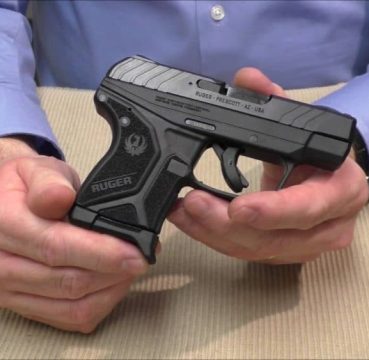


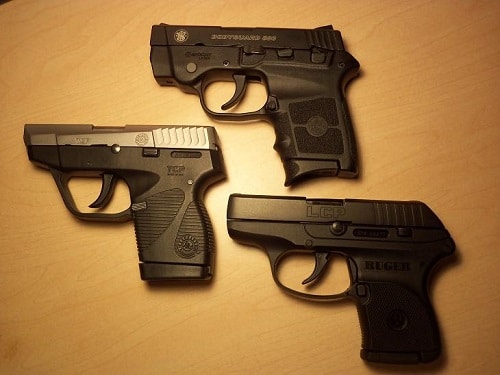

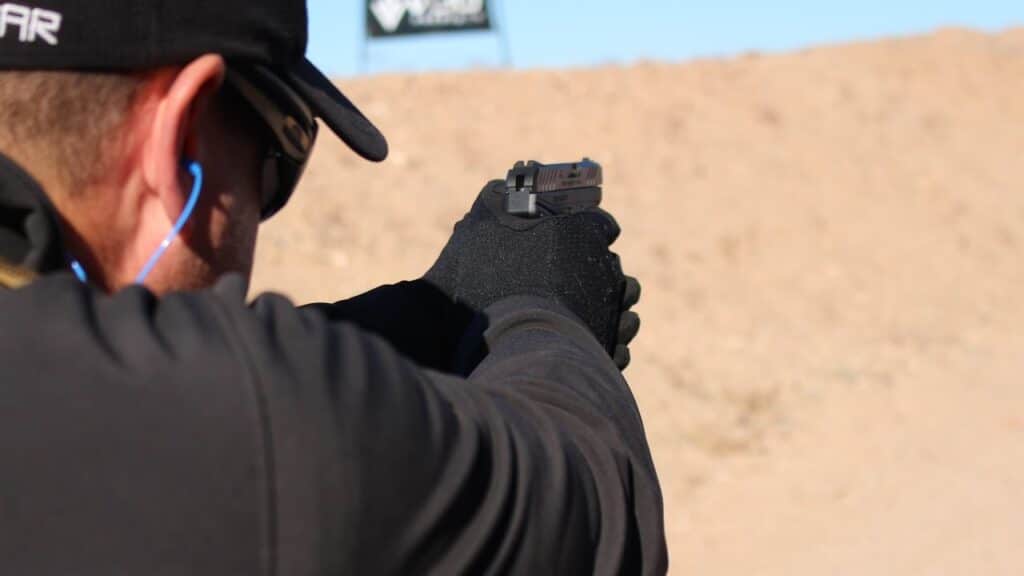
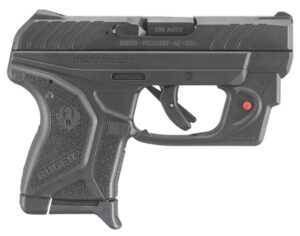

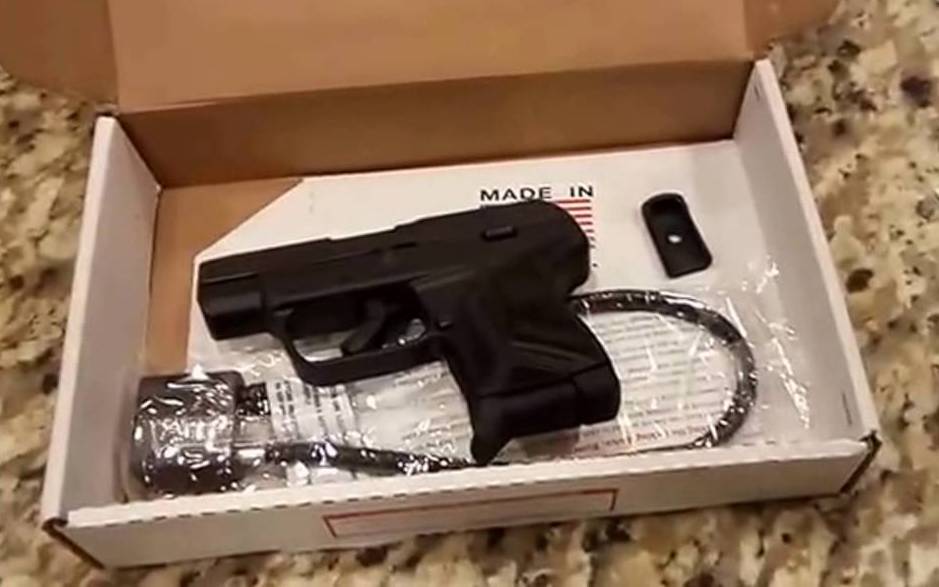









6 Responses
If you buy this gun for target shooting you are first off going to be very disappointed. Secondly, you probably know almost nothing about guns and shooting. This gun is not designed for that. What it does really well is provide you with a pocket-sized gun that is fast to bring into action and offers a limited but decent ability to dissuade an attacker from persisting in their attack. Unless you train with an automatic you may in a moment of stress draw the gun and fail to disengage the safety. This is just like carrying a revolver. You pull it out, point it, and pull the trigger.
I just bought one and was sort of surprised at how easily I could keep my groups fairly small at the sort of distances that I would normally expect to need a pocket gun. It barks and bucks a little but I ran a box of ammo through it with no problems or damage to my hand. I have in the past been much more likely to carry a revolver but the advances in the smaller autos has encouraged me to give them a try. It is a lot lighter than my snubnosed 38 revolvers and when it is in my front pocket it isn’t obvious that I am carrying. Normally I wear a small in the pant holster but then a lot of times I will just drop a gun in my pocket when I am going outside or to someplace close.
In my instance, this gun is for protecting me from someone that is probably within 25 feet. At that distance, I can cover a 6 round group with the palm of my hand. It is a plan C type of thing. First I will try to talk a fool out of messing with me. Secondly, I will just leave and not engage with them. The third is when neither of those things worked and they are attacking me. At that point, I will KILL you. The thing about wounding a criminal is that when the cops show up he was just walking along and you shot him for no reason!! If they don’t have a criminal record then it is your word against theirs and since THEY have a bullet in them the cops are going to look at you hard. I had a friend that ended up in court over a situation like this. He was found innocent BUT it cost him a small fortune to defend himself in court. He has said since that he would have been better off to take his chances and let the guy beat him up and rob him.
Handgunner was a little harsh but made valid points – “These are NOT target pistols.”
“Many people feel that they do not have to train often with a pocket gun. Wrong, they should train more than a larger firearm. Small barrel firearms are not for Newbies. Train often and diligently.”
I carry a Kel-Tec .380 P-3AT. I practice drawing and firing in a tactical situation such as being attacked on the street. Within ten feet, draw and fire without aiming, just pointing I hit a silhouette in the chest 6 out of 6. But not the first time. I was told to make it a real life situation. I think that is good advice
It is obvious you know nothing about Pocket guns. There was the original LCP which had a terrible DAO. Then replaced by the the LCP GEN 2 which is still made in Camden North Carolina. It is a lovely trigger not gritty and not a hard pull. For God sake it is about 6 lbs of pull weight. The LCP ll trigger is in the opinion of many long time pocket gun enthusiast as dangerous and not suited for pocket carry. Much controversy over this. These are NOT target pistols. Although that is how many people shoot them, I will grant you that.
What you failed to mention is the fact that the LCP’s will fold like a cheap lawn chair with any substantial ammo through them. They are very cheaply made, Many people feel that they do not have to train often with a pocket gun. Wrong, they should train more than a larger firearm. Small barrel firearms are not for Newbies. Train often and diligently. There are much better pocket guns out there. Look for a steel chassis and steel parts. The LCP’s suffer from crack frames, cracked grips, split rails, broken take down pins and on and on not to mention are the worst for recoil and known for a high Five type of Slap from the Muzzle rise. The LCP’s are extremely over rated. Shot around, shoot more of them and compare.
Current LCP production of both the original and II are in Mayodan, NC. LCP original style got an improved trigger circa 2013 and can be noted by the absence of a ‘hyphen’ in the serial #. I shoot LCP’s quite a bit every month of the year and have had no issues.
No, not at all. Every Ruger firearm can be dry fired, even the 22’s. On the Mark series, however, it is recommended to replace the fired pin stop after 1,000 dry fires.
will dry firing my lcp2 harm it.